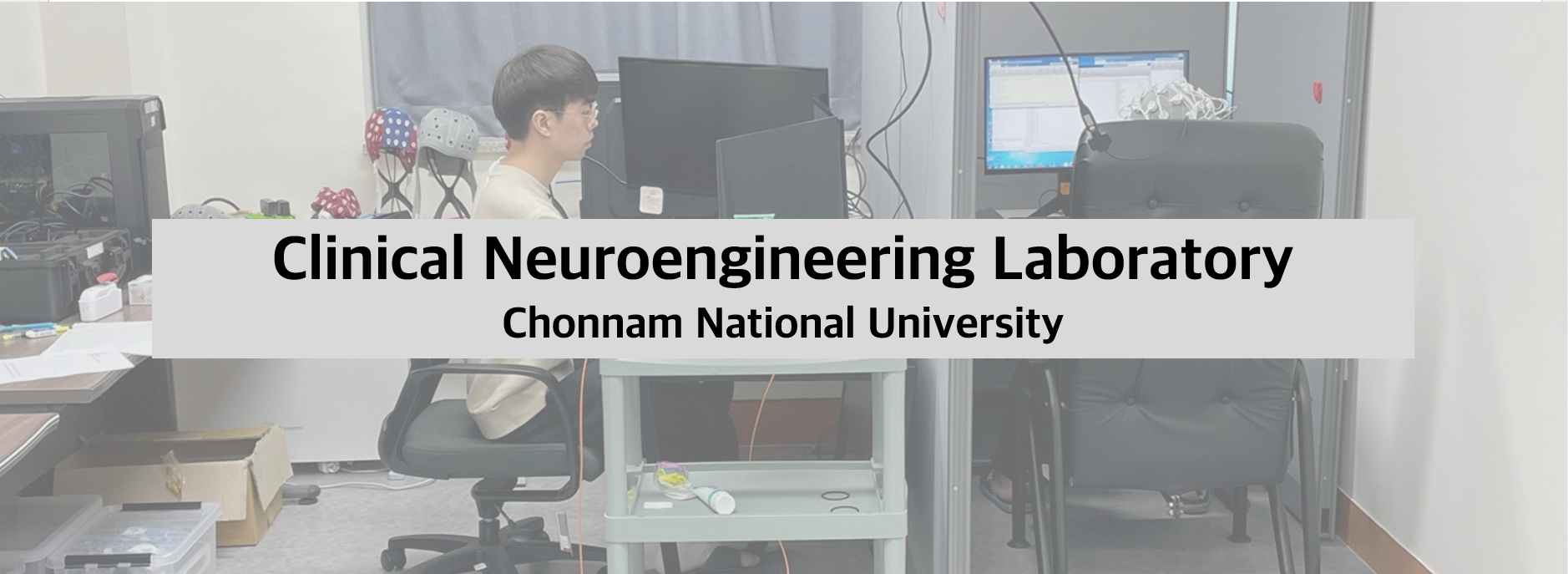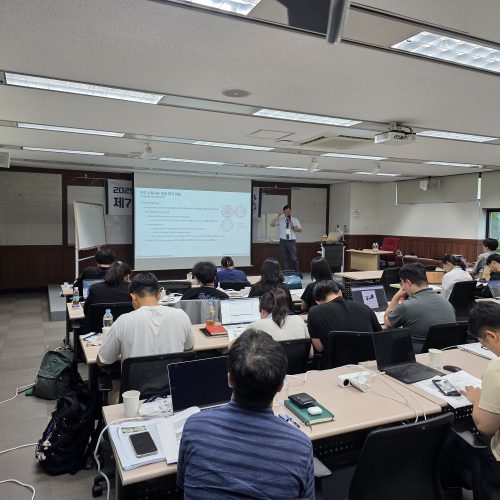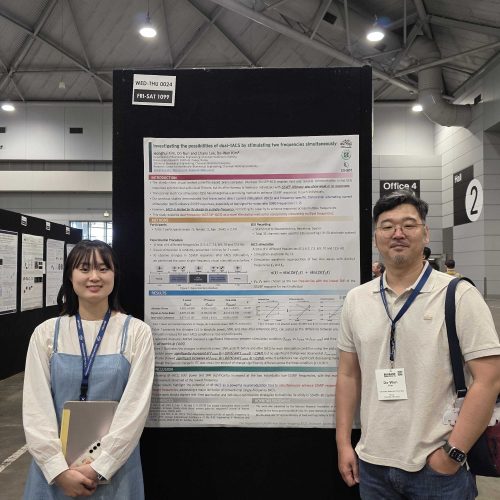Park Y; Yoon E; Park J; Kim J S; Han J W; Bae J B; Kim S; Kim D; Woo S J; Park J; Lee W; Yoo S; Kim K W: White matter microstructural integrity as a key to effective propagation of gamma entrainment in humans. GeroScience, vol. 47, no. 1, pp. 1019–1037, 2025, ISSN: 2509-2723. @article{Park2024,
title = {White matter microstructural integrity as a key to effective propagation of gamma entrainment in humans},
author = {Yeseung Park and Euisuk Yoon and Jieun Park and Jun Sung Kim and Ji Won Han and Jong Bin Bae and Sang-Su Kim and Do-Won Kim and Se Joon Woo and Jaehyeok Park and Wheesung Lee and Seunghyup Yoo and Ki Woong Kim},
doi = {10.1007/s11357-024-01281-2},
issn = {2509-2723},
year = {2025},
date = {2025-02-00},
journal = {GeroScience},
volume = {47},
number = {1},
pages = {1019--1037},
publisher = {Springer Science and Business Media LLC},
abstract = {Abstract
Gamma entrainment through sensory stimulation has the potential to reduce the pathology of Alzheimer’s disease in mouse models. However, clinical trials in Alzheimer’s disease (AD) patients have yielded inconsistent results, necessitating further investigation. This single-center pre-post intervention study aims to explore the influence of white matter microstructural integrity on gamma rhythm propagation from the visual cortex to AD-affected regions in 31 cognitively normal volunteers aged ≥ 65. Gamma rhythm propagation induced by optimal FLS was measured. Diffusion tensor imaging was employed to assess the integrity of white matter tracts of interest. After excluding 5 participants with a deficit in steady-state visually evoked potentials, 26 participants were included in the final analysis. In the linear regression analyses, gamma entrainment was identified as a significant predictor of gamma propagation (p < 0.001). Furthermore, the study identified white matter microstructural integrity as a significant predictor of gamma propagation by flickering light stimulation (p < 0.05), which was specific to tracts that connect occipital and temporal or frontal regions. These findings indicate that, despite robust entrainment of gamma rhythms in the visual cortex, their propagation to other regions may be impaired if the microstructural integrity of the white matter tracts connecting the visual cortex to other areas is compromised. Consequently, our findings have expanded our understanding of the prerequisites for effective gamma entrainment and suggest that future clinical trials utilizing visual stimulation for gamma entrainment should consider white matter tract microstructural integrity for candidate selection and outcome analysis.},
keywords = {},
pubstate = {published},
tppubtype = {article}
}
Abstract
Gamma entrainment through sensory stimulation has the potential to reduce the pathology of Alzheimer’s disease in mouse models. However, clinical trials in Alzheimer’s disease (AD) patients have yielded inconsistent results, necessitating further investigation. This single-center pre-post intervention study aims to explore the influence of white matter microstructural integrity on gamma rhythm propagation from the visual cortex to AD-affected regions in 31 cognitively normal volunteers aged ≥ 65. Gamma rhythm propagation induced by optimal FLS was measured. Diffusion tensor imaging was employed to assess the integrity of white matter tracts of interest. After excluding 5 participants with a deficit in steady-state visually evoked potentials, 26 participants were included in the final analysis. In the linear regression analyses, gamma entrainment was identified as a significant predictor of gamma propagation (p < 0.001). Furthermore, the study identified white matter microstructural integrity as a significant predictor of gamma propagation by flickering light stimulation (p < 0.05), which was specific to tracts that connect occipital and temporal or frontal regions. These findings indicate that, despite robust entrainment of gamma rhythms in the visual cortex, their propagation to other regions may be impaired if the microstructural integrity of the white matter tracts connecting the visual cortex to other areas is compromised. Consequently, our findings have expanded our understanding of the prerequisites for effective gamma entrainment and suggest that future clinical trials utilizing visual stimulation for gamma entrainment should consider white matter tract microstructural integrity for candidate selection and outcome analysis. |
Seok H S; Kim S S; Kim D; Shin H: Toward Objectification of Subjective Chronic Pain Based on Implicit Response in Biosignals. IEEE Trans. Biomed. Eng., vol. 72, no. 1, pp. 337–345, 2025, ISSN: 1558-2531. @article{Seok2025,
title = {Toward Objectification of Subjective Chronic Pain Based on Implicit Response in Biosignals},
author = {Hyeon Seok Seok and Sang Su Kim and Do-Won Kim and Hangsik Shin},
doi = {10.1109/tbme.2024.3452708},
issn = {1558-2531},
year = {2025},
date = {2025-01-00},
journal = {IEEE Trans. Biomed. Eng.},
volume = {72},
number = {1},
pages = {337--345},
publisher = {Institute of Electrical and Electronics Engineers (IEEE)},
keywords = {},
pubstate = {published},
tppubtype = {article}
}
|
Lee H; Lee W; Kim S; Kim H; Ahn M; Kim J; Kim D; Yun C; Hwang H: Effect of dynamic binaural beats on sleep quality: a proof-of-concept study with questionnaire and biosignals. Sleep, vol. 47, no. 10, 2024, ISSN: 1550-9109, (<b>Note!</b>). @article{Lee2024,
title = {Effect of dynamic binaural beats on sleep quality: a proof-of-concept study with questionnaire and biosignals},
author = {Hwa-Ah-Ni Lee and Woo-Jin Lee and Seong-Uk Kim and Hyunji Kim and Minkyu Ahn and Jeonghui Kim and Do-Won Kim and Chang-Ho Yun and Han-Jeong Hwang},
doi = {10.1093/sleep/zsae097},
issn = {1550-9109},
year = {2024},
date = {2024-10-11},
urldate = {2024-10-11},
journal = {Sleep},
volume = {47},
number = {10},
publisher = {Oxford University Press (OUP)},
abstract = {<jats:title>Abstract</jats:title>
<jats:p>Binaural beat (BB) has been investigated as a potential modality to enhance sleep quality. In this study, we introduce a new form of BB, referred to as dynamic BB (DBB), which incorporates dynamically changing carrier frequency differences between the left and right ears. Specifically, the carrier frequency of the right ear varied between 100 and 103 Hz over a period, while the left ear remained fixed at 100 Hz, yielding a frequency difference range of 0 to 3 Hz. The objective of this study was to examine the effect of DBB on sleep quality. Ten healthy participants were included in a cross-over design, where they experienced both DBB and a SHAM (absence of sound) condition across two consecutive nights, with polysomnography evaluation. DBB was administrated during pre-sleep initiation, sleep onset, and transition from rapid eye movement (REM) to non-REM stage. DBB significantly reduced sleep latency compared to the SHAM condition. Electrocardiogram analysis revealed that exposure to DBB led to diminished heart rate variability during the pre-sleep initiation and sleep onset periods, accompanied by a decrease in low-frequency power of heart rate during the sleep onset period. DBB might be effective in improving sleep quality, suggesting its possible application in insomnia treatments.</jats:p>},
note = {<b>Note!</b>},
keywords = {},
pubstate = {published},
tppubtype = {article}
}
<jats:title>Abstract</jats:title>
<jats:p>Binaural beat (BB) has been investigated as a potential modality to enhance sleep quality. In this study, we introduce a new form of BB, referred to as dynamic BB (DBB), which incorporates dynamically changing carrier frequency differences between the left and right ears. Specifically, the carrier frequency of the right ear varied between 100 and 103 Hz over a period, while the left ear remained fixed at 100 Hz, yielding a frequency difference range of 0 to 3 Hz. The objective of this study was to examine the effect of DBB on sleep quality. Ten healthy participants were included in a cross-over design, where they experienced both DBB and a SHAM (absence of sound) condition across two consecutive nights, with polysomnography evaluation. DBB was administrated during pre-sleep initiation, sleep onset, and transition from rapid eye movement (REM) to non-REM stage. DBB significantly reduced sleep latency compared to the SHAM condition. Electrocardiogram analysis revealed that exposure to DBB led to diminished heart rate variability during the pre-sleep initiation and sleep onset periods, accompanied by a decrease in low-frequency power of heart rate during the sleep onset period. DBB might be effective in improving sleep quality, suggesting its possible application in insomnia treatments.</jats:p> |





